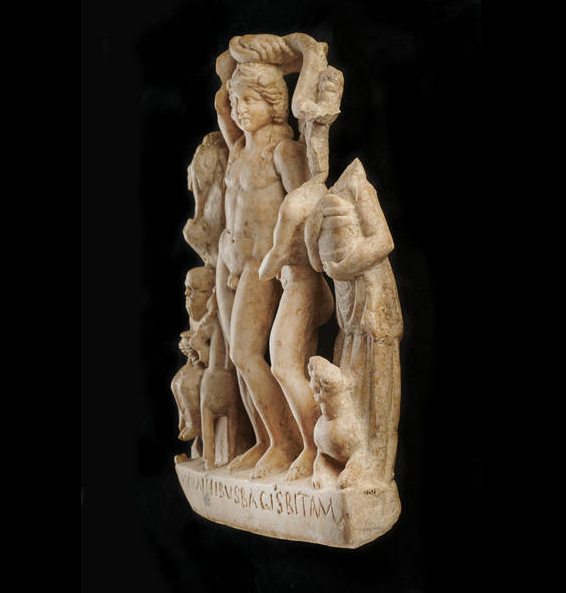
Ancient Coin of the Day: The last few days have been a bit coin-light, so let’s get back to it with a look at some electrum issues of Thebes, starting with this hemidrachm ca. 360-340 BC. #ACOTD #Numismatics #Thebes
Image: ANS 1959.73.1. Link - numismatics.org/collection/195…

Image: ANS 1959.73.1. Link - numismatics.org/collection/195…


These fabulous coins come from a series of electrum coins issued by Thebes which is in itself interesting given the lack of gold mines in Boeotian territory, entailing that the dating of these issues has come under recent scrutiny.
The Obverse of this series shows a bearded and ivy-wreathed Dionysus. Dionysus was said to have been born in Thebes, and then famously returned to that City where its king, Pentheus, refused to acknowledge Dionysus' god-head. 

This episode ended with Pentheus being torn apart by the frenzied Maenads, the female worshippers of Dionysus, including Pentheus' own relatives: his mother, Agave, and aunt, Autonoe.
Image: Kimbell Art Gallery (AP 2000.02). Link - kimbellart.org/collection/ap-…
Image: Kimbell Art Gallery (AP 2000.02). Link - kimbellart.org/collection/ap-…

The Reverse shows another well-known scene, the drakonopnigon: the infant Heracles strangling the serpents sent by Hera. The scene and the mintmark, ΘΕ, are set in an incuse square. Note also the dotted Θ that appeared on Theban coins after 426 BC. 

The drakonopnigon had featured on Theban silver staters in the latter half of the 5th Century BC. Heracles was also born in Thebes, giving the city rightful claim to use him in their numismatic iconography.
Image: British Museum (EH,p395.53.Theb). Link - britishmuseum.org/collection/obj…
Image: British Museum (EH,p395.53.Theb). Link - britishmuseum.org/collection/obj…

By the beginning of the Fourth Century BC the design of the drakonopnigon scene had largely been amended to make the depiction of Heracles as an infant the more typical type, as on this example.
Image: ANS 1941.153.480. Link - numismatics.org/collection/194…

Image: ANS 1941.153.480. Link - numismatics.org/collection/194…


Recent work on the electrum series has suggested that the coins may have been struck at a time of increasing Boeotian influence in the Aegean, perhaps minted as a means to build relationships with states in the north-eastern Aegean where electrum was regarded as a premier metal.
For more on this, see:
GARTLAND, S.D. “The Electrum Coinage of Thebes.” The Numismatic Chronicle (1966-), vol. 173, 2013, pp. 23–32.
jstor.org/stable/43859723
#ACOTD #Numismatics #Thebes
GARTLAND, S.D. “The Electrum Coinage of Thebes.” The Numismatic Chronicle (1966-), vol. 173, 2013, pp. 23–32.
jstor.org/stable/43859723
#ACOTD #Numismatics #Thebes
• • •
Missing some Tweet in this thread? You can try to
force a refresh















